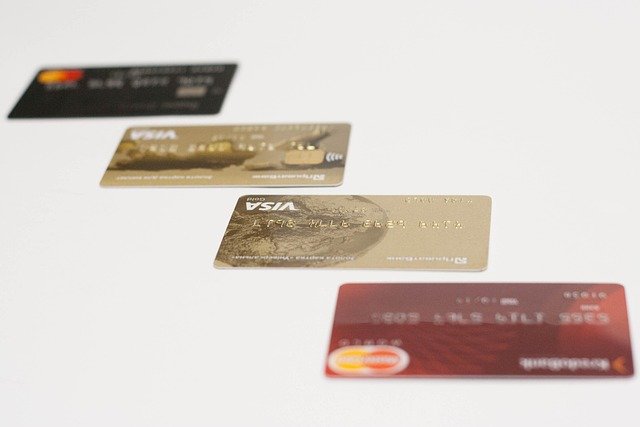Credit Cards Demystified: A Practical Consumer Guide
Learn how credit cards work and how to use them to your advantage. This in-depth guide explains card types, rewards, fees, and protections, and offers practical tips for building credit, avoiding costly mistakes, and managing or reducing debt. Ideal for anyone choosing a card or looking to improve credit habits.

Credit Cards Demystified: A Practical Consumer Guide
Credit cards can be powerful financial tools when handled correctly. They provide convenience for purchases, extra layers of consumer protection, and opportunities to earn rewards — but they can also lead to costly interest and damage to your credit if mismanaged. This guide walks through the major card types, common perks and protections, fee traps to watch, how cards affect credit scores, and practical debt-management tactics so you can pick and use cards wisely.
Different Types of Credit Cards
Cards are built around different goals and borrower profiles. Picking the right one starts with knowing the options:
- Rewards cards: Offer cashback, points, or miles for everyday spending. Reward rates differ by issuer and spending category, so select a card that aligns with your typical purchases.
- Travel and premium cards: These provide boosted travel earnings, airport lounge access, travel credits, and elite perks. They usually carry higher annual fees but can be worthwhile for frequent travelers who use the benefits.
- Business cards: Designed for company expenses, they include features like employee accounts, spend tracking, and business-oriented rewards or reporting tools.
- Student cards: Geared toward first-time borrowers, these cards often have simpler approval criteria and educational features to help young adults learn good credit habits.
- Secured cards: Require a refundable security deposit that typically sets the credit limit. Secured cards are a practical route for building or rebuilding credit when you can’t qualify for unsecured products.
Your ideal card depends on your spending patterns, tolerance for fees, and current credit history. If you rarely carry a balance, rewards cards can add value; if you have limited credit history, a secured or student card may be the best start.
Rewards, Protections, and Perks
Many cards deliver more than just a payment method. Typical benefits include:
- Cashback programs, often ranging from about 1% to 5% depending on card and category.
- Travel rewards and airline miles that reduce the cost of flights and hotels when redeemed strategically.
- Purchase protections like extended warranties, return protection, and fraud monitoring.
- Trip interruption or delay insurance and rental car insurance on eligible bookings.
- Zero liability policies that shield you from unauthorized charges in many circumstances.
- Premium services such as concierge lines, emergency card replacement, and airport lounge access on higher-tier cards.
When evaluating perks, measure their real value against any annual fee and consider how easy it is to redeem rewards. A generous points program is worth little if the rewards are hard to use or require excessive spending to reach meaningful value.
Fees, Terms, and What to Watch For
Cards carry a range of fees and contract terms that determine their true cost:
- Annual fees: Some cards are free annually; premium cards often charge hundreds of dollars per year for added benefits.
- Balance transfer fees: A fee charged as a percentage of the amount moved to another card.
- Cash advance fees and higher APRs applied to cash withdrawals.
- Foreign transaction fees on purchases made outside the issuer’s domestic network.
- Late payment penalties and potential penalty APRs after missed payments.
- Over-limit fees, though many issuers have moved away from charging these if you opt out of over-limit processing.
Always read the card agreement and the summary box (often called the Schumer box) to understand interest rates, introductory offers, grace periods, and penalty terms before applying.
How Credit Cards Influence Your Credit Score
Proper use of credit cards is one of the fastest ways to build a solid credit record. Key scoring factors include:
- Payment history: Making payments on time is the most important factor for most scoring models.
- Credit utilization: The ratio of your revolving balances to your credit limits. Keeping utilization under 30% is commonly recommended; lower is better.
- Length of credit history: Older accounts increase the average age of your credit, which can boost scores.
- Credit mix: A blend of installment loans and revolving credit can help, though it’s a smaller factor.
- New credit and inquiries: Multiple recent applications can temporarily reduce your score.
Consistently paying at least the minimum due and keeping balances low will help you establish and maintain a positive credit profile.
| Card Type | Notable Features | Typical Annual Fee Range |
|---|---|---|
| Basic | No rewards, lower APR options | $0 |
| Rewards | Cashback/points (1–5%) | $0–$95 |
| Premium Travel | High travel rewards, elite perks | $395–$695 |
| Secured | Deposit-backed, good for building credit | $0–$49 |
| Business | Business tools and rewards | $0–$295 |
Prices, rates, or cost estimates mentioned in this table are based on the latest available information and may change over time. Independent research is advised before making financial decisions.
Managing and Reducing Credit Card Debt
Healthy habits turn credit cards from a liability into an asset. Actionable strategies include:
- Pay the statement balance in full each month whenever possible to avoid interest and maintain a clean payment record.
- If you carry balances, prioritize paying cards with higher interest rates first (debt avalanche) to save on interest, or tackle smaller balances first (debt snowball) to build momentum.
- Keep utilization low by distributing charges across several cards or requesting a credit line increase (without opening new accounts that could lower your average age of credit).
- Automate minimum or full payments to prevent missed payments and late fees.
- Consider introductory 0% APR balance transfer offers to consolidate high-interest debt, but factor in transfer fees and the rate after the promotional period ends.
- If debt becomes unmanageable, consult a reputable credit counselor or evaluate debt consolidation loans that may offer a lower, fixed interest rate.
Choosing the Right Card and Final Tips
Match the card to your goals: a no-frills, low-cost card for tight budgets; a cash-back or rewards card if you consistently pay in full and can maximize returns; premium travel cards if you will use and recoup high-tier perks; and secured or student cards for building credit. Compare APRs, fees, reward structures, and protections before deciding.
Used deliberately, credit cards can add safety, convenience, and value to your finances. Learn the terms, keep balances under control, and use cards as tools to support a broader budget and savings plan rather than as a short-term fix for overspending.






